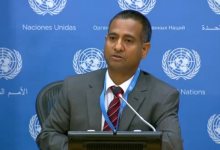Aadel Collection
Death in the dorms: Iranian students recall horror of police invasion
Death in the dorms: Iranian students recall ltrror of police invasion Wor ,. http://wwwguardiancoulc'world/2009/Jul/12/iran-tehran-university-stude
guardlancouk
Death in the dorms: Iranian students
recall horror of police invasion
• Victims tell of arrests, threats and beatings
• Two women among five killed by officers
1 of3 10/19/2009 3:07 PM
Death in the dorms: Iranian students recall ltrror of police invasion Wor ,. http://wwwguardiancoulc'world/2009/Jul/12/iran-tehran-university-stude
Saeecl Kamali Dehghaii
guardian.co.uk, Sunday 12 July 2009 22.44 BST
A iai tknSr
They came in the small hours, just as the dormitories were settling down for the night.
Outside, Tehran was still in ferment, a city gripped by fury two days after a “stolen
election”. Inside the dorms on Amirabad Street, students were trying to sleep, though
nerves were jangling; just hours earlier several had been beaten in front of the main
gate to the university.
What happened next developed into one of the seminal events of jr ri's post-election
unrest: police broke locks and then bones as they rampaged through the dormitories,
attacked dozens of students, carted off more than 100 and killed five. The authorities
still deny the incursion took place. But the account pieced together from interviews with
five of those present tells a different story.
“We were getting ready to go to sleep when we suddenly heard them breaking the locks
to enter our rooms,” said one of the 133 students arrested that night. “I'd seen them
earlier beating students but I didn't imagine that they would come inside. It's even
against Iranian law.”
Forty-six students from one dorm were arrested and taken to the basement of the
interior ministry on nearby Fatemi Street. It was there, on the building's upper floors,
that the vote-counting and — claim opposition supporters — the rigging, was going on.
Another 87 were taken to a security police building on Hafez Street. Students spoke of
torture and mistreatment.
Five died: they were Fatemeh Barati, Kasra Sharafi, Mobina Ehterami, Kambiz Shoaee
and Mohsen Imani — buried the following day in Tehran's famous Behesht-e-Zahra
cemetery, reportedly without their families being informed. Their names were
confirmed by Tahkim Vahdat, a student organisation.
Witnesses said the two women and three men were repeatedly beaten on the head with
electric batons. Their families were warned not to talk about their children or hold
funerals — like the parents of Neda Soltan, whose face became synonymous with the
protest movement after she was filmed being shot dead in the street.
Under Iranian law, police, revolutionary guards and other militia are not allowed to
enter universities — a legacy of the 1999 student riots. Until last month those riots were
the most serious unrest the country had seen since the Islamic revolution.
But with the country convulsed by protests at the 12 June elections, there was no
holding back that Sunday night. “The police threw teargas into the dorms, beat us, broke
the windows and forced us to lie on the ground,” one student recalled. “I had not even
been protesting but one of them jumped on me, sat on my back and beat me. And then,
while pretending to search me for guns or knives, he abused me sexually. They were
2 of3 10/19/2009 3:07 PM
Death in the dorms: Iranian students recall I rror of police invasion Wor , , , http://www.guardian.co.uk/world/2009/jul/12/iran-tehran-university-stude...
threatening to hang us and rape us.”
Another described the scene: “The riot police stood in two lines, formed a tunnel with
their shields as its roof, and made us run through it again and again while beating us
and banging on their shields. “One of my roommates had a broken leg but they still
made him run.”
Others spoke of similar experiences at the hands of the Basij (paramilitary militia). “The
Basiji was on my back and told me: ‘I have not fucked anyone for the past seven years,
you cute boy! I'll show you what I can do to you when we arrive.' They were harassing
us and claiming we insulted them or the supreme leader.”
Before being taken away on a bus the students were made to stand in front of a
dormitory block with plastic bags over their heads, their hands bound with plastic ties —
known there as “Israeli handcuffs”.
“I had a second to recognise that it was the main building of the interior ministry in
Fatemi Street,” said another student, weeping. “I just couldn't believe it, there were
senior politicians, members of parliament and investigators on the upper floors and we
were in the basement. I have no doubt that they were busy rigging the votes upstairs.”
One detainee was abused by guards after he lost control of his bladder. Hours later they
were given bread and cheese that had been placed on a dirty floor and warned they
would be punished if they refused to eat. A Basiji called Au filmed them with his mobile
phone, ordering the captives to say “I am a donkey”.
Injuries were ignored. One student who had lost an eye after being hit by a plastic bullet
was not given medical attention. “We were begging them to transfer these two who were
suffering more than others to the hospital but they just said ‘let them die',” a witness
said.
Later, gas was pumped into the cells when all the students were being held in the
security police building. Their ordeal ended 24 hours later when the president of
Tehran University, Farhad Rahbar, and Alireza Zakani, a Tehran MP, spoke to the
detainees. Rahbar told them that he had given the police permission to enter the
dormitories to control the situation — but denied it a few days later.
Before being released the students were ordered to put on fresh clothes supplied by the
police. “They didn't want there to be any evidence of what had happened,” one of them
said. “But what's stronger than 133 students who were there, who saw everything, and
suffered?”
guardian.co.uk © Guardian News and Media Limited 2009
3 of3 10/19/2009 3:07 PM







